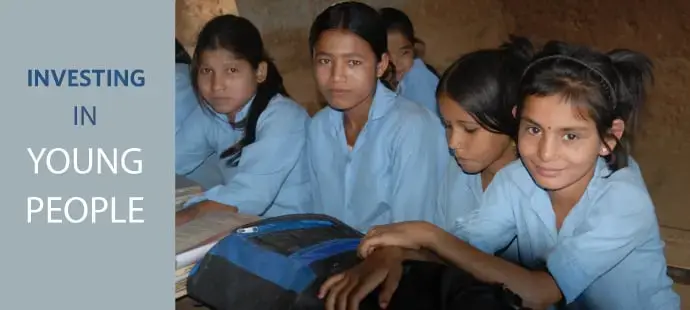Key Facts on Adolescents and Youth in Asia and the Pacific
Asia has the highest number of young people aged 10-24 (1.1 billion), which is over 60 per cent of the world’s population of young people.
Poverty
Many young people in Asia are living on less than $1.25 per day. Over one third (36 per cent) live in urban areas and this is growing rapidly with rural-to-urban migration.
Education
While there has been tremendous progress in student enrolment and attendance at primary school levels, there is often a sharp dropout rate at secondary levels. In South Asia, only 55 per cent of boys and 46 per cent of girls attend secondary school (compared to 83 per cent and 79 per cent respectively at primary school levels). The figures are slightly better in East Asia and the Pacific that show that 64 per cent of boys and 66 per cent of girls attend secondary school but again poor compared to primary school attendance levels which is high at 96 per cent.
Sexual and reproductive health
Sexual activity begins for most males and females in the later teenage years (ages 15-19 years). For girls in most countries in this region, sexual activity occurs mainly inside marriage. For many boys, sexual relationships during teenage years are non-marital, commence earlier than for girls, and may be with sex workers. These patterns reflect sociocultural norms and values in the region, where girls must maintain a reputation/guard their honour while boys may be allowed more freedom.
Child marriage
About one half of the girls who are affected by child marriage globally live in South Asia. In Afghanistan, Bangladesh, India, and Nepal, over 40 per cent of girls are married by age 18. Child marriage leads to a cycle of disadvantage: Poor/Under-un-educated/Marry too young/Children too early, too close, too many/Poverty.
Adolescent pregnancy
In Asia and the Pacific, nearly 6 million adolescent girls ages 15 to 19 become mothers every year. Adolescent pregnancy affects young girls’ future economic and social opportunities. Many girls who become pregnant do not complete their education, drastically limiting their opportunities for future employment and limiting opportunities for their children.
Youth unemployment
Some 36.4 million young people are unemployed in the Asia-Pacific region, with unemployment rates many times higher than among adults. Youth employment rates in Asia and the Pacific are higher than other regions, but a large number of youth are in under-paid work. These young people are trapped in a cycle of working poverty, working long hours in poor conditions in low productivity employment for inadequate wages. Young women have more difficulty than young men in finding work; the work they find is often in unprotected and low-skilled jobs. Children aged 5-14 involved in child labour are not included in labour figures. In Cambodia and Nepal, over one third of children (5-14) are involved in child labour.
Violence
In many places child marriage, gender based power relations, women’s low economic status and traditional practices/social norms perpetuate violence within marriage. Girls 15-19 experience high levels of physical and sexual violence both from intimate partners and non-partners.
In Asia and the Pacific, there is high acceptance/justification of intimate partner violence among adolescent girls themselves. These perceptions do not appear to be changing. In a recent review examining data from developing countries, the proportion of girls and women aged 15-49 who believe wife beating is justified in certain circumstances remains virtually the same across age ranges.
Information and communication
Seventy-one per cent of adolescents 15-19 in South Asia and 86 per cent in East Asia Pacific (excluding China) use at least one type of information media at least once a week (newspaper, magazine, TV, radio)
HIV/AIDS
Ten per cent of the global total of new HIV infections in the 15-24 age group in 2009 occurred in the Asia-Pacific Region; 590,000 young people are living with HIV in the region. The region primarily has concentrated epidemics, i.e., transmission occurs largely within key affected populations including sex workers, men who have sex with men, people who inject drugs, transgender people and their sexual partners. In the Asia-Pacific region, more males than females are living with HIV.




